1. Weekly USDA U.S. Beef and Pork Export Sales
Beef: For the week ending October 24, 2024, U.S. beef export net sales reached 8,000 metric tons (MT), marking a marketing-year low. This represents a 43% decline from the previous week and a 45% decrease from the prior four-week average. Primary increases were noted for South Korea (2,100 MT), Japan (2,000 MT), Canada (1,200 MT), Mexico (1,000 MT), and Taiwan (600 MT). However, these gains were offset by reductions, notably a 300 MT decrease for Vietnam. Additionally, net sales of 2,300 MT for 2025 were reported, with Mexico accounting for 2,200 MT and Japan for 100 MT. Exports totaled 14,400 MT, down 9% from both the previous week and the prior four-week average. The primary destinations were South Korea (4,100 MT), Japan (3,100 MT), China (2,000 MT), Mexico (1,200 MT), and Taiwan (900 MT).
Pork: Pork export net sales experienced reductions of 14,700 MT for 2024, a marketing-year low, significantly down from both the previous week and the prior four-week average. Increases were observed for Japan (2,300 MT), South Korea (2,100 MT), Panama (200 MT), the Dominican Republic (200 MT), and Nicaragua (100 MT). However, these were more than offset by reductions primarily from Mexico (7,700 MT), China (5,000 MT), Australia (2,900 MT), Colombia (1,500 MT), and Canada (1,100 MT). Net sales of 200 MT for 2025 were reported for South Korea (100 MT) and Vietnam (100 MT). Exports stood at 35,000 MT, up 8% from the previous week and 16% from the prior four-week average. The main destinations were Mexico (12,900 MT), Japan (4,200 MT), China (3,600 MT), South Korea (3,300 MT), and Colombia (2,700 MT).
2. China’s Meat Import Trends
In October 2024, China imported 535,000 MT of meat, a 1.1% decrease from September and a 3.1% decline compared to the same month last year. Cumulatively, from January to October 2024, China’s meat imports totaled 5.475 million metric tons (MMT), reflecting a 12.5% reduction from the corresponding period in the previous year.
3. Avian Influenza Impact on U.S. Dairy and Swine
Utah’s Dairy Herds: The Utah Department of Agriculture and Food reported that the first round of mandatory milk testing in northern Utah identified avian influenza infections in eight dairy herds. This development makes Utah the 15th state to report the avian flu virus in dairy cattle since its initial detection in Texas in March 2024.
California’s Dairy Industry: California’s dairy farmers are grappling with an escalating avian flu outbreak, affecting over 170 herds since late August. This accounts for nearly half of all U.S. cases in dairy cows since March. Given California’s leading role in national milk production, the continued spread of the flu raises concerns about potential shortages, though no current disruptions have been reported. The sensitive nature of the issue has led many farmers to refrain from public discussion, despite acknowledging its significance.
H5N1 Detection in Oregon Swine: The U.S. Department of Agriculture’s Animal and Plant Health Inspection Service (APHIS), in collaboration with Oregon state officials, is investigating a backyard farm where H5N1 avian influenza was detected in poultry and, for the first time, in one of five pigs. Despite the swine showing no signs of illness, they tested positive, leading to the euthanization of all five pigs. Shared resources on the farm may have facilitated cross-species transmission. The farm has been quarantined, but the USDA assures there is no risk to the U.S. pork supply. Genomic sequencing indicates no increased human transmissibility. The National Pork Producers Council emphasized the safety of the U.S. pork supply, noting longstanding collaboration with USDA’s APHIS to monitor swine flu. The pigs on the Oregon farm were not intended for the commercial food supply.
Pigs are of particular concern regarding the spread of bird flu because they can become co-infected with avian and human viruses, potentially leading to the emergence of new, more dangerous strains that can more easily infect humans. This case contributed to the USDA’s decision to broaden its bird flu surveillance to include nationwide bulk milk testing. USDA Secretary Tom Vilsack stated that while the virus is tied to wild birds, it is essential to understand its presence in dairy and cattle. Experts advise pig farmers to remain vigilant for further infections, emphasizing the need for preparedness in managing potential outbreaks.
4. USDA’s Expanded HPAI Testing in Dairy
In response to the avian influenza outbreak, USDA’s APHIS is implementing a tiered strategy to collect milk samples for detecting H5N1 avian influenza. This initiative aims to enhance biosecurity, guide containment efforts, and protect farm workers exposed to infected animals. Bulk milk testing will commence regionally, with further farm-level sampling as necessary. USDA will collaborate with state and private veterinarians, maintaining testing requirements for cattle before interstate movement to curb virus spread. Additionally, two vaccine candidates for dairy cows are currently undergoing field trials.
5. Weekly USDA Dairy Report
Butter: In the East region, butter demand is light from the retail sector and lighter than anticipated from the food service sector. The Central region reports steady retail demand and mixed food service demand. The West region indicates steady demand from both sectors. Cream volumes are widely available, with some butter plant managers unable to accommodate spot loads. Production schedules are generally steady or strong nationwide. Bulk butter overages range from minus 5 to 8 cents above market across all regions.
Sources include:
USDA Weekly Export Sales Report
Utah Department of Agriculture and Food
Bloomberg article on California dairy avian flu outbreak
USDA Animal and Plant Health Inspection Service (APHIS) statements
National Pork Producers Council press release
Reuters interview with USDA Secretary Tom Vilsack
